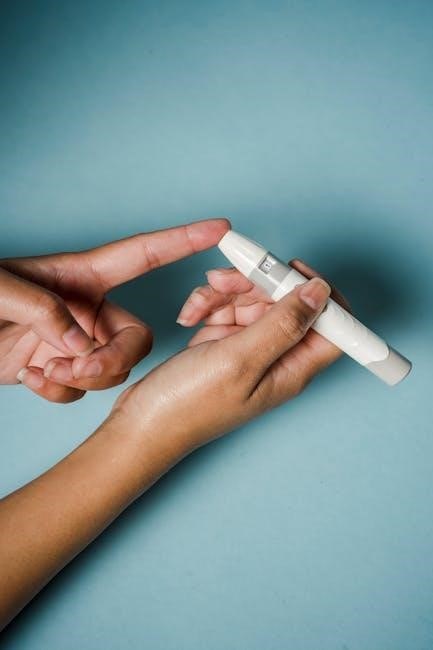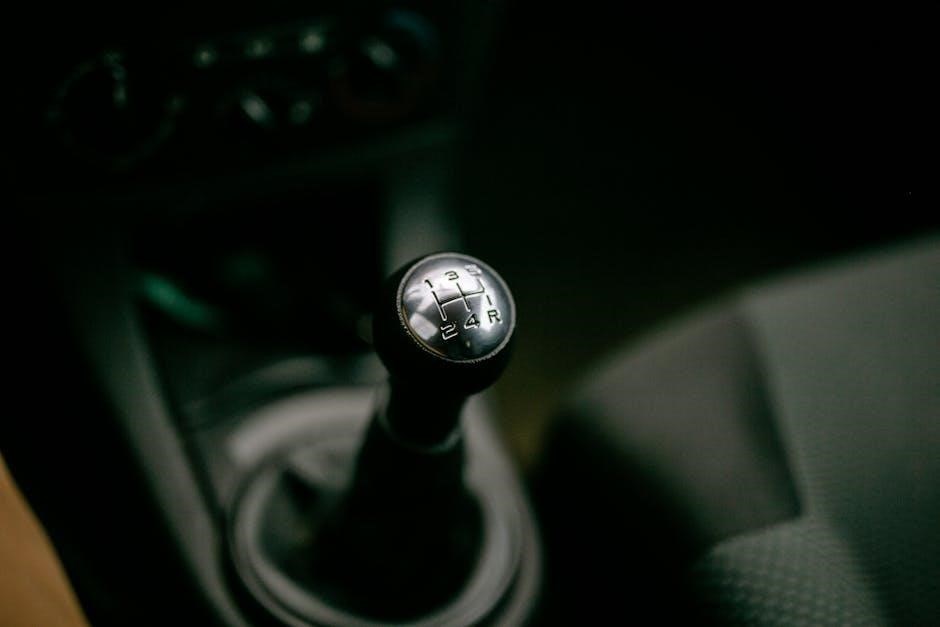
Understanding the “Check Headlamp System” Warning
The “Check Headlamp System” warning signals a potential issue with your vehicle’s lighting system, often related to faulty bulbs, sensors, or electrical connections. While not always critical, it’s important to investigate promptly to ensure safety and prevent further complications. Always consult your owner’s manual for specific guidance or seek professional assistance if unsure.
What the Warning Means
The “Check Headlamp System” warning indicates a detected issue within your vehicle’s headlamp system, such as faulty bulbs, sensors, or electrical malfunctions. It signals that the system is not functioning correctly, potentially affecting safety and visibility. This alert requires attention to ensure proper operation of headlights, which are critical for driving safety. While it may not always indicate a severe problem, addressing it promptly is essential to avoid further complications or safety risks. Always refer to your owner’s manual for specific guidance or consult a professional if the issue persists.
Why It Appears on Your Dashboard
The “Check Headlamp System” warning appears when your vehicle’s onboard computer detects an issue within the headlamp system. This could be triggered by faulty bulbs, electrical malfunctions, or sensor problems. Modern vehicles use advanced systems to monitor headlamp performance, ensuring safety and visibility. The warning may also appear after installing new bulbs or accessories, as the system recalibrates or detects inconsistencies. In some cases, it might indicate a software glitch or loose connections. Regardless of the cause, the alert is designed to prompt immediate attention to maintain road safety and prevent potential hazards. Always investigate the issue to resolve it promptly.

Common Causes of the Headlamp System Warning
Faulty headlight bulbs, electrical system issues, or problems with the headlamp sensor/module are common causes. These components failing trigger the warning to alert the driver.
Faulty Headlight Bulbs
Faulty headlight bulbs are a primary cause of the “Check Headlamp System” warning. Over time, bulbs can degrade, causing dimming or flickering, or may fail entirely. Both halogen and LED bulbs can experience issues, though LEDs are generally more durable. If a bulb is loose or has poor connections, it can trigger the warning. Sometimes, the bulb may appear functional but have internal faults. It’s crucial to inspect bulbs regularly and replace them as needed. Always consult your vehicle’s manual for specific instructions on bulb replacement. If unsure, seeking assistance from a professional is recommended to ensure safety and proper function.
Issues with the Electrical System
Electrical system problems are a common trigger for the “Check Headlamp System” warning. Faulty wiring, corroded connectors, or a blown fuse can disrupt communication between components. Loose or damaged electrical connections in the headlamp assembly can also cause malfunctions. Additionally, issues with the dimmer switch or headlamp relay may prevent proper signal transmission. It’s essential to inspect the fuses, relays, and wiring for damage or corrosion. If you suspect an electrical issue, consult your vehicle’s manual for guidance or use a multimeter to test connections. Addressing these problems promptly can resolve the warning and restore functionality to your headlamp system.
Problems with the Headlamp Sensor or Module
A faulty headlamp sensor or module can trigger the “Check Headlamp System” warning. Modern vehicles rely on sensors to regulate functions like automatic headlamp leveling or adaptive lighting. If the sensor becomes misaligned, dirty, or damaged, it may fail to accurately detect lighting conditions. Similarly, the headlamp control module, which processes sensor data, can malfunction due to electrical faults or software issues. Symptoms may include erratic headlamp behavior or complete system failure. Consulting your vehicle’s manual or using a scan tool can help identify specific sensor or module errors. Addressing these issues promptly ensures proper headlamp functionality and safety on the road.

Step-by-Step Troubleshooting Guide
Start by checking the headlight bulbs for damage or wear. Inspect fuses and relays in the fuse box; Test the headlamp connectors for corrosion or damage. If issues persist, consult a professional.
Checking the Headlight Bulbs
Begin by consulting your vehicle’s owner’s manual to locate the headlight bulbs. Turn off the engine and ensure the headlights are cool. Remove the bulb holder or access the bulb compartment as directed. Inspect the bulbs for signs of damage, such as cracks or discoloration. If a bulb is faulty, replace it with the correct type specified in the manual. Test the headlights to ensure they function properly after replacement. If the issue persists, check for loose connections or corrosion in the bulb sockets. Always refer to the manual for specific instructions tailored to your vehicle’s make and model.
Inspecting the Fuses and Relays
Start by locating the fuse box, as indicated in your vehicle’s manual. Open it and identify the headlamp-related fuses using the diagram provided. Visually inspect each fuse for signs of damage or blown circuits. If a fuse is blown, replace it with one of the same amperage rating. Next, check the relays, which are often located in the same box. Use a multimeter to test for continuity or consult a professional if unsure. After replacing any faulty components, test the headlamp system to ensure proper function. Refer to your manual for specific guidance on fuse and relay locations and testing procedures.
Testing the Headlamp Connectors
To test the headlamp connectors, start by consulting your vehicle’s manual to locate the connector positions. Turn on the headlights to test live circuits. Use a multimeter to check for voltage at the connector pins when the high or low beams are active. Ensure the ground wire has continuity. Inspect the connectors for corrosion, dirt, or damage, and clean or replace them as needed. If no power is detected, trace the wiring back to the fuse box or relay. Test for continuity in the wiring harness to identify any breaks. This process helps pinpoint electrical issues affecting the headlamp system.
Resetting the Headlamp System
Resetting the headlamp system often involves using a scan tool or Forscan to clear error codes. Some vehicles may allow manual resets by cycling the headlight switch or disconnecting the battery. Always consult your vehicle’s manual for specific reset procedures to ensure proper system functionality and avoid potential damage.
Using a Scan Tool or Forscan
Utilizing a scan tool or Forscan is a common method to reset the headlamp system. These tools connect to your vehicle’s OBD-II port, allowing you to access diagnostic codes and clear them. After addressing the underlying issue, use the scan tool to reset the system. Forscan, particularly popular among Ford owners, provides detailed control over vehicle systems. Once connected, navigate to the service menu, select the headlamp system, and follow prompts to reset. Ensure all lights function properly after resetting. If unsure, consult your vehicle’s manual or seek assistance from a professional technician to avoid further complications.
Manual Reset Methods
Manual reset methods can resolve the “Check Headlamp System” warning without specialized tools. Start by turning the headlights on and off several times, then toggle the dimmer switch. This may reset the system. Another method involves disconnecting the battery, waiting a few minutes, and reconnecting it. Some vehicles require cycling the headlight switch or performing a series of key-on, key-off cycles. Always consult your owner’s manual for specific instructions, as procedures vary by make and model. If these steps fail, professional assistance may be necessary to diagnose deeper issues.
LED Headlight-Specific Considerations
LED headlights may require electronic adjustments using specific tools, unlike traditional bulbs. Always consult the manual for proper maintenance and troubleshooting procedures to avoid system warnings.
Maintenance and Troubleshooting Tips
Regularly inspect headlight bulbs for damage or wear and consult your vehicle’s manual for guidance. Use a multimeter to test electrical connections and ensure proper voltage supply to the headlamp system. Check for loose or corroded connectors, as these are common causes of system warnings. If issues persist, consider testing the dimmer switch, headlight relay, or delay timer. For LED headlights, avoid DIY repairs for complex electrical issues and seek professional assistance. Always ensure tight connections and proper bulb replacement to maintain functionality and prevent future warnings. These steps help maintain your headlamp system’s reliability and safety on the road.

Preventive Maintenance
Regularly check headlight bulbs, connectors, and electrical connections to ensure proper function. Clean lenses and inspect wiring to prevent system warnings and maintain road safety.
Regular Checks to Avoid System Warnings
Performing regular inspections of your headlamp system can help prevent warning lights from appearing. Start by checking the condition and functionality of all headlight bulbs, ensuring they are clean and free from damage. Inspect the electrical connectors for corrosion or loose connections, as these can disrupt the system. Clean the headlight lenses periodically to maintain visibility and avoid moisture buildup, which can trigger sensors. Test the high and low beams to ensure they are working properly. Review your owner’s manual for specific maintenance recommendations tailored to your vehicle. Addressing these issues promptly can help avoid unnecessary system warnings and ensure safe driving conditions.

Dealer vs. DIY Repair
For complex issues like sensor malfunctions or electrical problems, visiting a professional is recommended. Simple fixes, such as replacing bulbs, can often be handled independently with proper guidance.
When to Visit a Professional
If the “Check Headlamp System” warning persists after basic troubleshooting, it’s wise to consult a professional. Issues like faulty sensors, complex electrical faults, or advanced module problems often require specialized tools and expertise. Additionally, if you’re unfamiliar with automotive systems or feel uncomfortable performing DIY repairs, a certified technician can provide accurate diagnoses and solutions. Modern vehicles, especially those with LED or adaptive lighting systems, may need calibration or updates that only a dealership or qualified mechanic can perform. Don’t hesitate to seek professional help to ensure safety and maintain your vehicle’s optimal performance.
What You Can Fix Yourself
Some headlamp system issues can be resolved without professional help. Start by checking and replacing faulty headlight bulbs, ensuring they are compatible with your vehicle. Consult your owner’s manual for guidance on accessing and replacing bulbs. Additionally, inspect the fuses and relays in the electrical system, as these are often simple to replace. Cleaning corroded connectors or tightening loose connections can also resolve the warning. For basic electrical checks, a multimeter can help identify issues like power supply problems. However, if the problem persists after these steps, it’s best to seek professional assistance to avoid further complications.